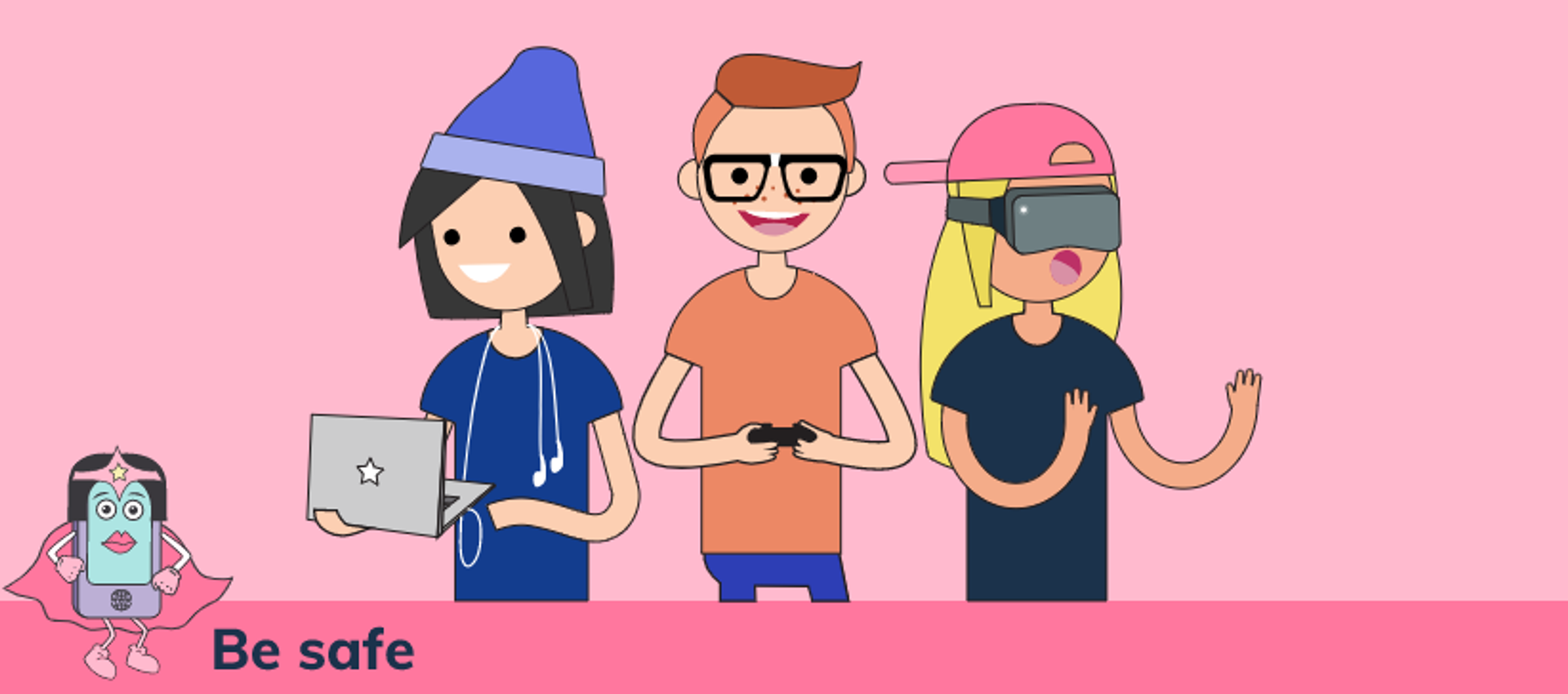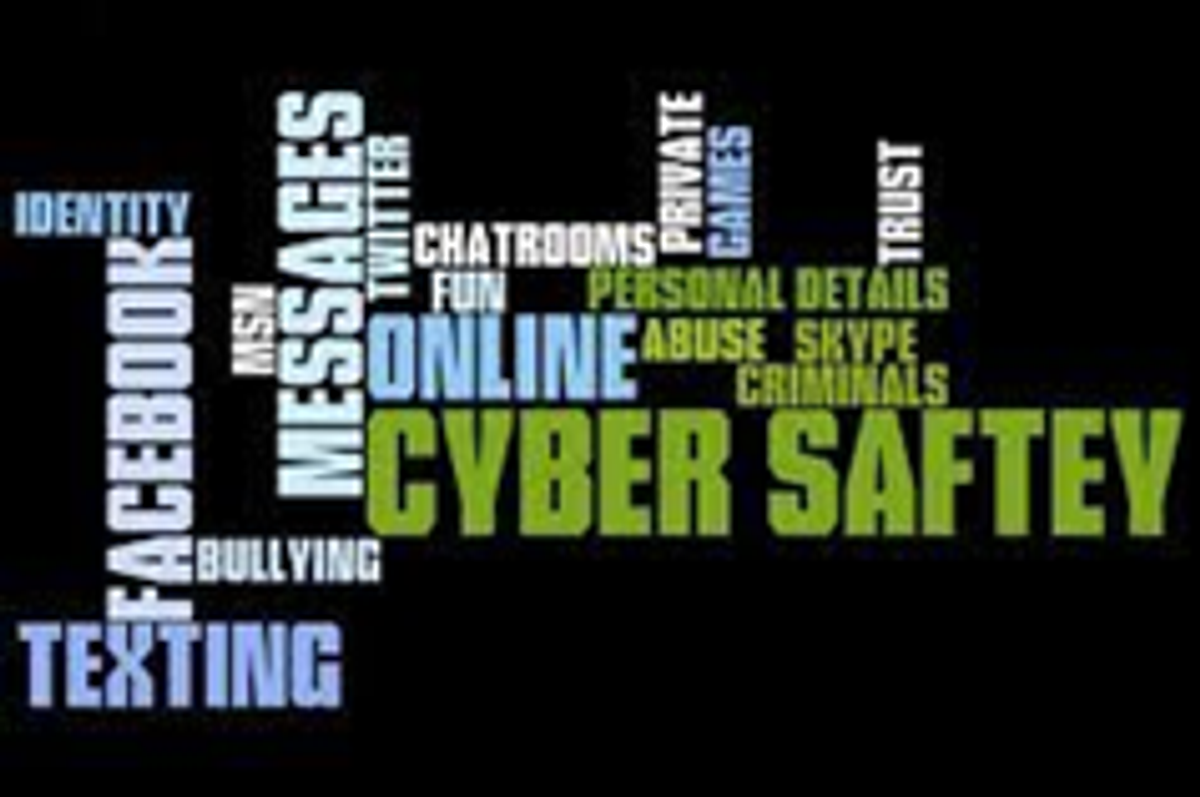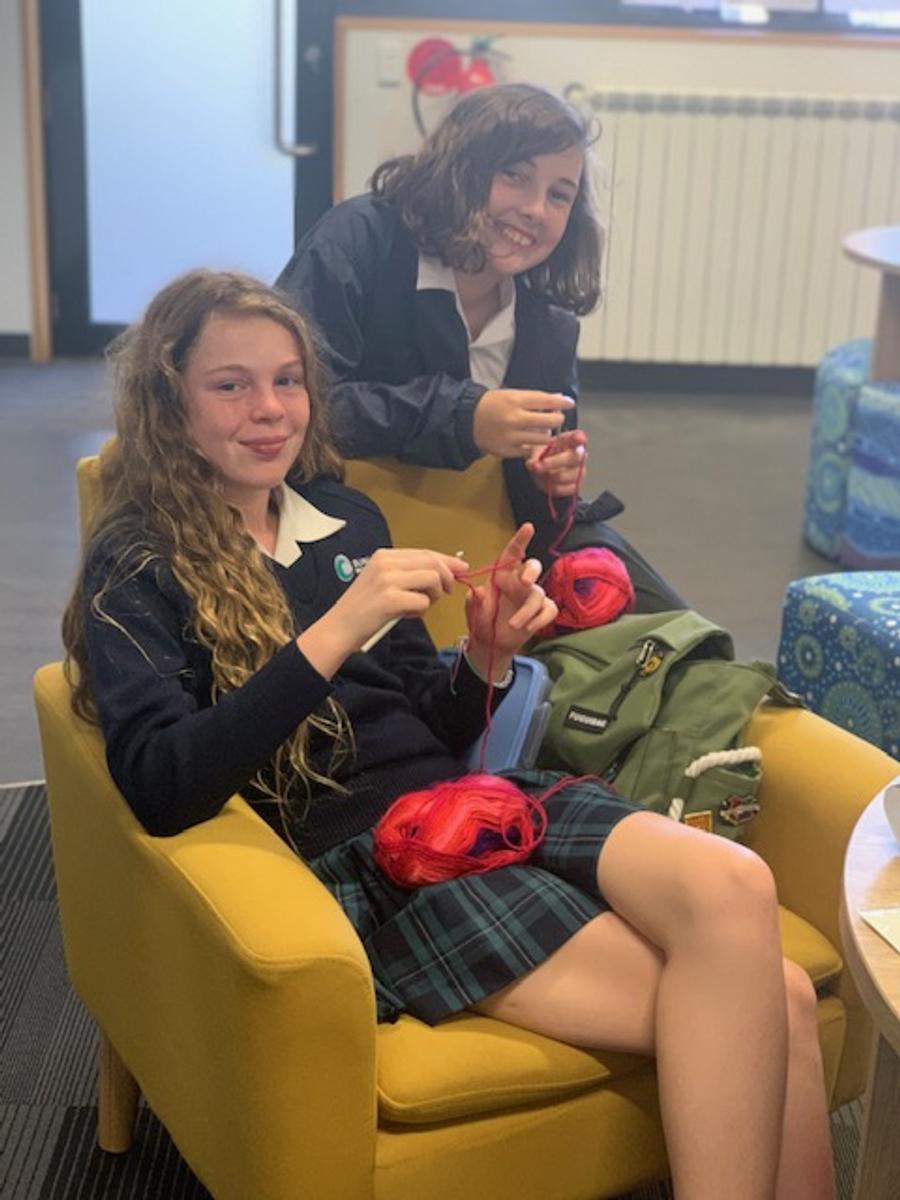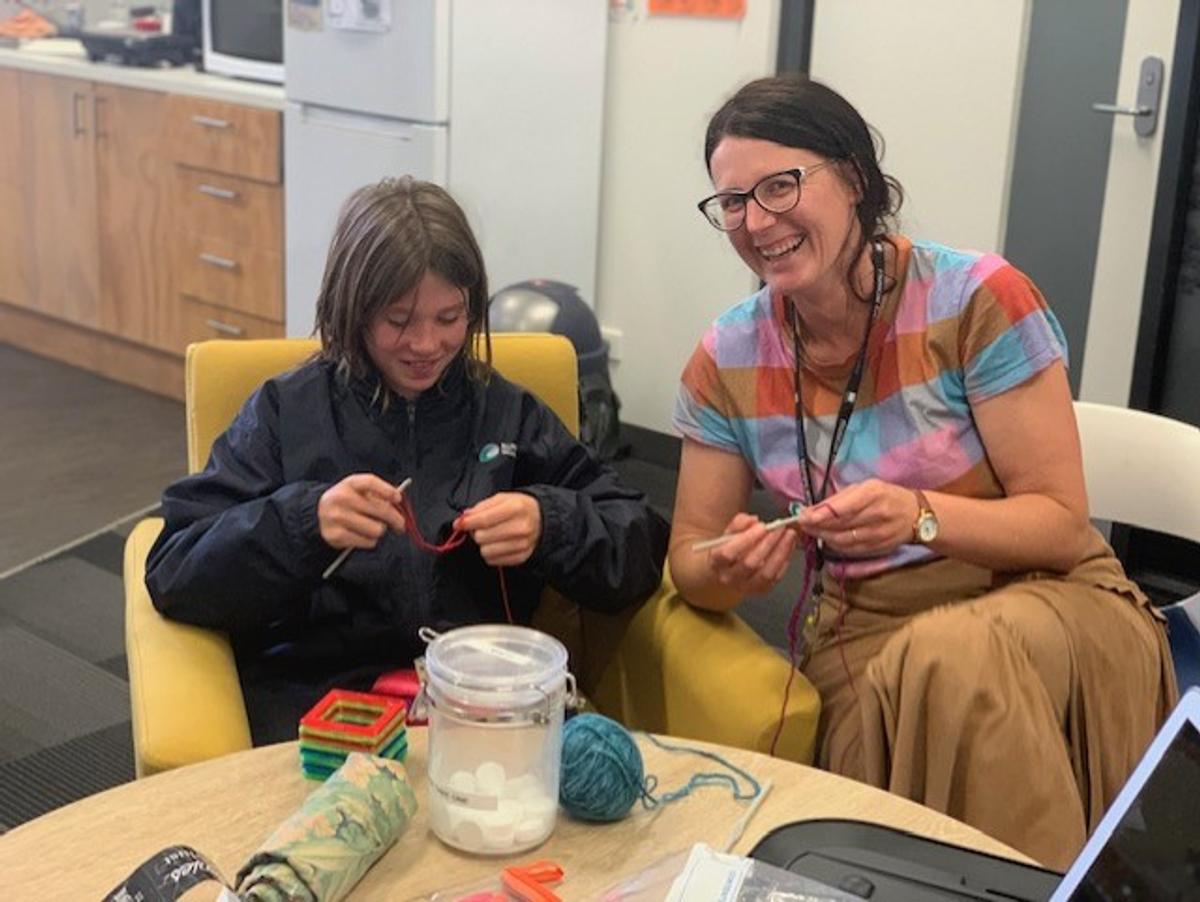WELLBEING

Accessing Wellbeing:
Students can access wellbeing via an online booking form for Wellbeing and health related matters.
Student Wellbeing Check In Request Form
Parents/ Carers can access supports from Wellbeing for their young person via the Administration Office.
SURFSUP WITH THE WELLBEING TEAM
As we begin Week 7 of Term 1 the team in Wellbeing have been catching up with students and enjoying groups and activities being currently being run. It’s a busy space, but we enjoy being able to support our students with their health and wellbeing. Just remember that there is an access link that students can use to get in touch with the wellbeing team.
On Wednesday 1st March our students in Year 7 were led by Senior Constable Cathie Hastie about online safety. To follow on from this, we would like to provide some more information around cybersafety and how you can navigate this space with your young person.
CYBERSAFETY
What is bullying online?
Bullying online, or ‘cyberbullying’, is similar to offline bullying. Both happen when someone causes mental harm to another person who feels unable to stop it happening, which can also lead to physical suffering.
Often cyberbullying is linked to bullying that’s happening offline – for example, a fight at school or in a friend group can spill over onto social media or messaging apps.
Cyberbullying can be very harmful for a number of reasons:
- It can happen at any time and follow the targeted person to any place where they have a digital device.
- If the bullying content has been shared on a public platform such as social media, it can be seen and spread by lots of people very quickly.
- If the content is not removed, it can last online for years, affecting the reputation or ‘digital footprint’ of the person who is bullied.
Some examples of cyberbullying include:
- Sending hurtful or abusive messages
- Spreading nasty rumours or lies about someone
- Creating fake accounts in someone’s name to embarrass them or to cause drama by sending nasty messages to their friends
- Sharing photos or videos of someone to make fun of them or humiliate them
- ‘Trolling’ people (posting or commenting online to provoke an argument or emotional reaction)
- Threatening to hurt someone, or encouraging others to hurt them
- Making new accounts to try to keep contacting someone who has already blocked you
- Mocking or teasing someone because of personal attributes, like their race, religion, gender, sexual orientation or how they look – this is sometimes known as ‘online hate’
- Purposely making someone feel left out or ignored
Why does bullying online happen?
There are many reasons why bully someone online can happen. For example:
- They are hitting back at a person who was mean to them first
- They are angry or upset, so they want others to feel bad too
- They are trying to be funny, but the joke hurts another person’s feelings
- They don’t think about the impact before sharing something that is likely to hurt or embarrass someone else.
If you upset someone online, it’s best to apologise and delete the content to stop the situation getting worse.
What should I do if I’m being bullied online?
No one should have to deal with cyberbullying, but knowing the most effective ways to stop it will help.
Don’t hit back
Resist the urge to hit back with your own mean or hurtful comments – it usually just makes the situation worse and could get you into trouble. Sometimes it’s a good idea to step away from the screen for a couple of minutes to calm down and work out what to do next. You can also use your in-app functions to ignore, hide or mute the other person’s posts or comments so you don’t keep seeing them. Remember that bullying usually makes the person doing it look bad, not you. Just because they say something mean about you doesn’t mean it’s true, so try not to let it get you down.
Tell someone you trust
You don’t have to cope with bullying on your own. You may feel like you should be able to handle it yourself but if you’re feeling a little out of your depth, talking it through with someone else may help. An adult you trust, like a family member or teacher, can give you a fresh point of view, as well as helping you decide what to do and how to deal with any impacts. Try to stay connected with your support person while you handle the situation – you could show them this webpage so they understand more about it and can help you.
Think about asking them to stop
Sometimes people do things online without thinking about how others could be affected. This isn’t cool. You can try asking the person who is bullying you to stop and to delete what they sent, posted or shared – if you feel safe doing that. It might not always work, but letting them know they have upset or embarrassed you may make them rethink their actions. You could also send them a link to eSafety’s advice on what to do if you’ve cyberbullied someone, so they know how to help fix what they have done.
If the person keeps bullying you – even after you’ve asked them to leave you alone – stop communicating with them and follow the next steps.
Collect evidence
Take screenshots or recordings of bullying content so you have proof. Also note the usernames and display names of people involved and keep URLs (web addresses), as well as message links (for Discord). You should also write down how long the bullying has been going on and whether you know the person responsible. Find out more about collecting evidence.
Report harmful content
Report the content to the social media site, game or app used to bully you. The eSafety Guide has reporting links for the ones that most people use. If they don’t help within 48 hours and you're under 18, you can report serious cyberbullying to eSafety. We can work with you to try to have the content removed and point you in the right direction to get further support. If you're 18 or older, you may be able to make an adult cyber abuse report.
Prevent further contact
Use your in-app functions to ignore, hide or mute the other person’s posts or comments so you don’t keep seeing them. The eSafety Guide tells you how. After reporting them, you can also block them through your account, or on your device, to take away their power to upset you further.
Get more help
Cyberbullying can make you feel bad. Lots of people say the harmful content makes them angry, sad, embarrassed, hurt, worried, scared or stressed. The harm may be felt for a short time or last a long time. How to look after yourself has tips on what you can do to feel better, like using the wellbeing resources on social networks and reminding yourself about positive things.
If you feel you do not have anyone close you can talk to about how the cyberbullying is making you feel, you could contact Kids Helpline https://kidshelpline.com.au/
(for young people up to age 25) or another confidential counselling or support service. They have people who are ready to listen and help.
You can find more eSafety https://www.esafety.gov.au/ advice about how to report cyberbullying of someone under 18, what eSafety does next and answers to other common questions.
If you are 18 or older, you may find our information about adult cyber abuse helpful.
Supporting Inclusion
The Stand Out Group have been meeting on a Monday at lunch time in the Media room and welcomes any members of the LGBTIQA+ community or alias to come together to share stories, eat yummy food and develop ways to show Inclusion in our school. This week we also welcomed Junior School Captains into the space to listen to some of the ways we can support young people. Thank you also to teachers who support the group in their lunch times.
Wellbeing Five: Hashtags: Respectful Relationships
~ Taken from reachoutaustralia
With Sydney World Pride running from 17 February to 5 March, it’s a great time for students all around the country to reflect on the importance of building respectful relationships and supporting diversity. For more articles and personal stories about everything LGBTQI+ related, you can take a look at ReachOut’s Pride collection for students.
Crochet Club
The Crochet Club hit the Wellbeing space 2 weeks ago and it was great to see so many students learning the art of crochet. We are building up our skills to hopefully make a blanket for the wellbeing space which will be nice come winter. We are a long way off but students pick up the skills so quickly - we are excited about the next few weeks and what we will see. Crochet is a calm, relaxing, self-esteem building and provides a great opportunity to team build across many year levels.
Year 11 Wellbeing Day
On the 7th March the Year 11 students were treated to a Wellbeing Day, with the main focus being on Sexual Health and Consent Education.
The day was started with Rochelle Hamilton from BRaSH (Barwon Reproductive and Sexual Health Clinic) who came and spoke with the students regarding accessing sexual health advise, contraception options, pregnancy options and STI screening. The students were really engaged and the comments from this work shop were very positive. Students were given the option to ask questions to Rochelle and to learn how they can access services within our community as young people.
As always, stay kind and reach out if you need to.
~ Michelle, Mel, Jazz and Rachel.
Mate Space / Headspace
Headspace Geelong has been hosting Mate Space sessions in Torquay.
These male only sessions are held inside the Youth Centre at KMCC and runs from 4pm-6pm.
Body Confident Children & Teens Webinar
Register: Events Butterfly Parent Webinar









